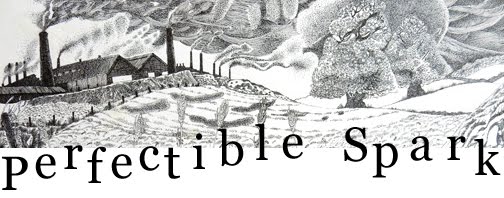.jpg)
.jpg)
My approach to colour work is different on many levels to my black and white work. I had tried including some pen marks in my colour work but didn't really like the results (that's not to say I won't try again at some point). I've gravitated towards coloured pencil as a mid way point between the graphical approach of pen and ink and a completely painterly approach. This said I find it quite difficult to rein myself in to just one medium, maybe because of underlying insecurity when it comes to using colour. If so, then perhaps a little insecurity is useful when it comes to the visual arts, as maybe this drives an artist to become more adventurous and to stretch their imagination in an attempt to overcome their own shortcomings. This is certainly the case for me.

One way in which I’m working differently at the moment with my colour work is the way I spread my creative energies. I tend to work intensely at one pen and ink drawing pouring all of my energy into one piece, whereas if I work too intensely at one coloured pencil drawing I find that I over work it and end up spoiling it, losing something of the spontaneity and luminosity of colour necessary for a piece to be successful. This is one of the reasons why photographing my work at various stages has become important (almost an obsession) with me.
Also, working on several pieces at once acts as a catalyst for the more analytical side of my imagination. I feel that I have so much ground to cover in my colour work (composition, chiaroscuro and treatment of detail are all areas that I need to work on) that I need to have more than one piece on the go at once, so I can look back from a distance and see where I have come to, and work out the direction in which I will next go.

.jpg)
My most successful pieces so far, I feel, have been the smaller, more intense pieces which explore the shadows and the intensity of colour that exists in the contrast between the light and dark. For me this has an emotional resonance as well as an artistic one.
.jpg)
.jpg)



































 We stood beneath this tree late on Sunday afternoon listening to leaves and seeds dropping all around us. Squirrels darted across the path, timid and forgetful.
We stood beneath this tree late on Sunday afternoon listening to leaves and seeds dropping all around us. Squirrels darted across the path, timid and forgetful.





